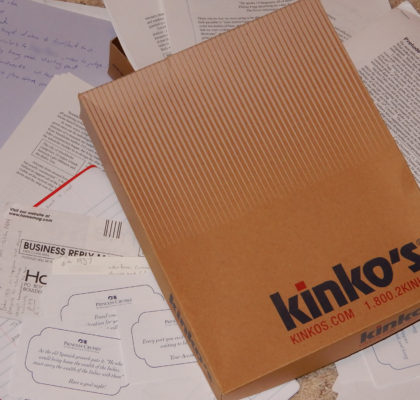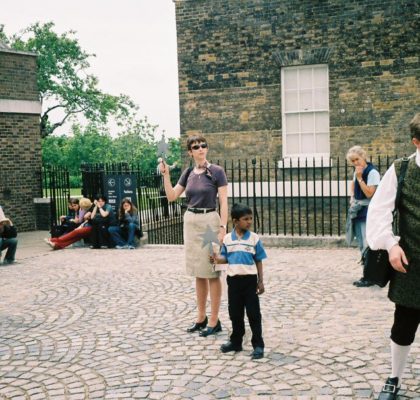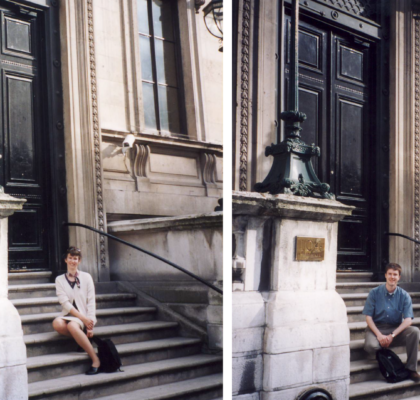- March 4, 2001 (Day -4)
- March 6, 2001 (Day -2)
- March 7, 2001 (Day -1)
- March 8, 2001 (Day 1)
- March 10, 2001 (Day 3)
- March 11, 2001 (Day 4)
- March 12, 2001 (Day 5)
- March 13, 2001 (Day 6)
- March 14, 2001 (Day 7)
- March 15, 2001 (Day 8)
- March 16, 2001 (Day 9)
- March 17, 2001 (Day 10)
- March 18, 2001 (Day 11)
- March 19, 2001 (Day 12)
- Time Check: Day 12
- March 20, 2001 (Day 13)
- March 21, 2001 (Day 14)
- March 22, 2001 (Day 15)
- March 23, 2001 (Day 16)
- March 24, 2001 (Day 17)
- March 25, 2001 (Day 18)
- March 26, 2001 (Day 19)
- March 27, 2001 (Day 20)
- March 28, 2001 (Day 21)
- March 29, 2001 (Day 22)
- March 30, 2001 (Day 23)
- Time Check: Day 23
- March 31, 2001 (Day 24)
- April 1, 2001 (Day 25)
- April 2, 2001 (Day 26)
- April 3, 2001 (Day 27)
- April 4, 2001 (Day 28)
- April 5, 2001 (Day 29)
- Time Check: Day 29
- April 6, 2001 (Day 30)
- April 7, 2001 (Day 31)
- April 8, 2001 (Day 32)
- April 9, 2001 (Day 33)
- April 10, 2001 (Day 34)
- April 11, 2001 (Day 35)
- Time Check: Day 35
- April 12, 2001 (Day 36)
- April 13, 2001 (Day 37)
- April 14, 2001 (Day 38)
- April 15, 2001 (Day 39)
- April 16, 2001 (Day 40)
- Time Check: Day 40
- April 17, 2001 (Day 41)
- April 18, 2001 (Day 42)
- April 19, 2001 (Day 43)
- Time Check: Day 43
- April 20, 2001 (Day 44)
- Intermission
- April 21, 2001 (Day 45)
- April 22, 2001 (Day 46)
- April 23, 2001 (Day 47)
- April 24, 2001 (Day 48)
- April 25, 2001 (Day 49)
- April 26, 2001 (Day 50)
- April 27, 2001 (Day 51)
- April 28, 2001 (Day 52)
- Time Check: Day 52
- April 29, 2001 (Day 53)
- April 30, 2001 (Day 54)
- May 1, 2001 (Day 55) – Part I
- May 1, 2001 (Day 55) – Part II
- May 2, 2001 (Day 56)
- May 3, 2001 (Day 57)
- May 4, 2001 (Day 58)
- May 5, 2001 (Day 59)
- May 6, 2001 (Day 60)
- May 7, 2001 (Day 61)
- Time Check: Day 61
- May 8, 2001 (Day 62)
- May 9, 2001 (Day 63)
- May 10, 2001 (Day 64)
- May 11, 2001 (Day 65)
- May 12, 2001 (Day 66)
- May 13, 2001 (Day 67)
- May 14, 2001 (Day 68)
- May 15, 2001 (Day 69)
- Time Check: Day 69
- May 16, 2001 (Day 70)
- Time Check: Day 70
- May 17, 2001 (Day 71)
- May 18, 2001 (Day 72)
- May 19, 2001 (Day 73)
- May 20, 2001 (Day 74)
- May 21, 2001 (Day 75)
- May 22, 2001 (Day 76)
- May 23, 2001 (Day 77)
- May 24, 2001 (Day 78)
- May 25, 2001 (Day 79)
- Intermission – Part II
- May 27, 2001 (Epilogue)
March 15, 2001 (Day 8): Tallinn, Estonia – 10pm
The ferry docked on schedule at about 10am this morning. Overcast and gray skies joined with a very cold breeze off the Baltic welcomed our arrival in Tallinn and remained with us the rest of the day. Queuing for passport control was a chaotic mess, but otherwise went smoothly. Moments later, Estonia beckoned.
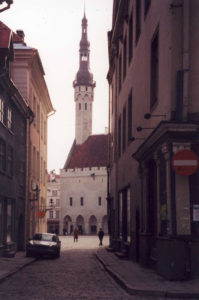 It seems that a majority of the tourists here seem to be from Sweden and Finland on the duty-free run, drinking and partying on the ship over and then catching the ship back. I suspect that not many spend the night here, which is a pity. Tallinn is a good city to see by foot – perhaps more charming when it is not freezing outside.
It seems that a majority of the tourists here seem to be from Sweden and Finland on the duty-free run, drinking and partying on the ship over and then catching the ship back. I suspect that not many spend the night here, which is a pity. Tallinn is a good city to see by foot – perhaps more charming when it is not freezing outside.
While arranging our onward tickets to Finland, I became acutely aware that I have no concept of what day it is. We asked for tickets to Finland for the day after tomorrow. “Saturday, yes?” the clerk inquired. I thought about it, looked blankly at Anna, and then checked the calendar on my watch until I could confirm that, yes, the day after tomorrow is Saturday. I am not quite sure which day I thought it might be, but Saturday just didn’t seem right.
Tallinn is in the process of remodeling. Parts of the Old Town are modern, trendy, clean; other sections contain cracked and faded exteriors facing undulating pavement littered with broken cobblestones. I had expected to find the Prague I fell in love with in 1991: older and worn with character, easy to get around, tourists beginning to trickle in. Instead, it is more like a Prague of 1993 with renovations underway, Western companies arriving, and a sound tourist infrastructure already in place including superb TI, well-done museums, magazines highlighting local events, and signs pointing direction to major sites.
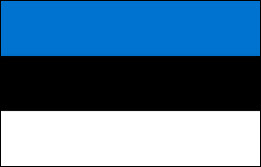 The Estonian flag has three horizontal stripes, representing three historical wars for independence. The white stripe represents hope, the black stripe to remember past oppression, and the blue stripe represents the sky, sea, and lakes. Over the past 800 years, the Danes, Swedes, Germans, Russians, and the Livonian Order have controlled the country. Prior to the singing revolution in 1991, the only time the country was independent was in the early 20th Century between the two World Wars. At the turn of the 20th century, the country was part of the Russian Empire. Independence was declared in early 1918, a day prior to German forces occupying Tallinn. Following the World War One Armistice, the Soviet Union attempted to reoccupy Estonia. The British navy engaged Soviet forces in 1918-9 in defense of Estonia – a plaque outside the Maritime Museum in Tallinn memorializes those in the British Navy who lost their lives fighting for Estonia.
The Estonian flag has three horizontal stripes, representing three historical wars for independence. The white stripe represents hope, the black stripe to remember past oppression, and the blue stripe represents the sky, sea, and lakes. Over the past 800 years, the Danes, Swedes, Germans, Russians, and the Livonian Order have controlled the country. Prior to the singing revolution in 1991, the only time the country was independent was in the early 20th Century between the two World Wars. At the turn of the 20th century, the country was part of the Russian Empire. Independence was declared in early 1918, a day prior to German forces occupying Tallinn. Following the World War One Armistice, the Soviet Union attempted to reoccupy Estonia. The British navy engaged Soviet forces in 1918-9 in defense of Estonia – a plaque outside the Maritime Museum in Tallinn memorializes those in the British Navy who lost their lives fighting for Estonia.
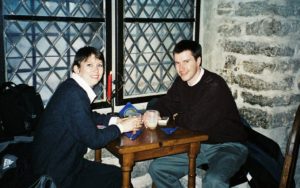 Spent the day trying to see as many of the sights of the city as our tolerance for cold weather would permit. I tend to be better equipped to tolerate cold weather than is Anna. But in the interest of maintaining our marriage, I have tried to be observant for her signals of discomfort: holding her hat down over her ears, covering her nose with gloved hands, extreme shivering, accumulation of frost on nose, fingers, or legs. When I see these signs, it is usually an indicator that a warmer activity would perhaps be welcome. Sometimes I can coax a few more minutes out of her by promising a warm event at a nearby location across town or atop a major hill, but this tends to work only once per trip so I need to pace myself. Fortunately, Tallinn is nearly as well-equipped with coffee houses as Stockholm – in particular, a comfy little coffee shop in the cellar of the Old Town Hall.
Spent the day trying to see as many of the sights of the city as our tolerance for cold weather would permit. I tend to be better equipped to tolerate cold weather than is Anna. But in the interest of maintaining our marriage, I have tried to be observant for her signals of discomfort: holding her hat down over her ears, covering her nose with gloved hands, extreme shivering, accumulation of frost on nose, fingers, or legs. When I see these signs, it is usually an indicator that a warmer activity would perhaps be welcome. Sometimes I can coax a few more minutes out of her by promising a warm event at a nearby location across town or atop a major hill, but this tends to work only once per trip so I need to pace myself. Fortunately, Tallinn is nearly as well-equipped with coffee houses as Stockholm – in particular, a comfy little coffee shop in the cellar of the Old Town Hall.
The name, “Kiek in de Kök,” translates from Low German as “Peek in the Kitchen” in reference to the height of the tower, which afforded unobstructed views into homes in the Lower Town.
We dashed through the snows in the Old Town to the “Kiek in de Kök” – a tall tower along the city walls which now serves as a museum concentrating on the military history of the city up to the 19th Century. The museum itself was well done which means, at this stage of the trip, that it had signs in English. The docents on each floor huddled around the space heaters, nodded a greeting when we entered, but remained tethered to their source of warmth. My favorite display explained how the defenders fired the cannons: they loaded the powder, placed the projectile in the barrel, lit the fuse, and then prayed that the cannon would not explode and kill them.
Our hotel had a soup bar which was exceptionally appealing after a day spent wandering in the cold. One of the songs piped in to serenade us during meal time was, I am certain, an Estonian cover of the ABBA song, “The Winner Takes it All.”
In 1219, Danish forces were engaged in battle outside of what is now Tallinn. Nearly defeated, they were visited by a vision of a white cross falling from heaven and landing in a field of blood. Inspired by this sign, they fought on eventually winning the battle. This symbol of a white cross on a red background went on to become the Danish flag.
